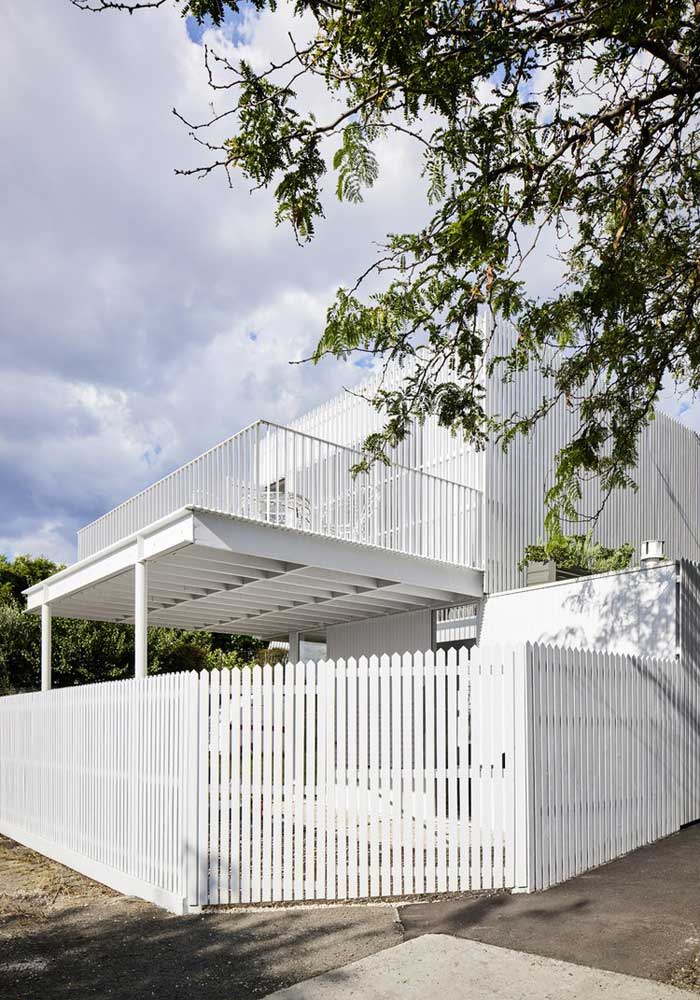Austin Maynard Architects took inspiration from the dream suburban life of the 1940s and 50s, complete with its white picket fences, to design the new addition to a freestanding Edwardian timber house in Melbourne.
The studio’s latest project, Picket House is a two-storey addition to an old house situated at the top of a hill in Northcote, Melbourne. The owners, Zoe and Merez who are professional chefs and parents to two young children, began their renovation with a simple objective – to create a deck at the back of the house.

The old part of the house, which was re-roofed and internally upgraded, contains the dormitory, with three bedrooms, a study and a bathroom. The new addition has living, dining and kitchen spaces in an open plan layout, with a pantry, powder room and laundry along the southern side at ground level. The double height living area maximises light and volume, meeting the owners’ brief. The first floor has a multifunctional open space with a walkway out to an external deck.
“Responding to site and orientation, the new addition is positioned on the southern side of the block, to maximise the garden space and allow northern sun into both levels. A vertical linking element between the old and the new building forms the new entryway, with a staircase between the varying floor levels responding to the gradient of the block. To reduce height and ensure the southern wall along the street is at fence height, the addition has been sunken in the ground,” the studio commented.
“As architects, whenever we’re presented with a laneway, or a corner, it’s always exciting because it means we can add another dimension. Often you see houses on corners that have not responded to site or opportunity. Instead they stick to the typical linear layout, and build a huge fence along the street, as though they might one day have a neighbour on that side. Whenever we have the ability to change the orientation, we do.”
“At Picket House we were presented with three frontage possibilities. By creating a new entry in the central link between the original home and the new addition, visitors to the house are invited directly into the entertaining, living and garden areas, rather than past private bedrooms.”
Recalling the dream suburban life of the 1940s and 50s, white picket fences have high cultural symbolism, thanks to films like ‘It’s A Wonderful Life’, the architects noted. White picket fences briefly saw a revival in the 1980s as new urbanist developers sought to attract potential residents with a sense of safety and security as well as friendly, neighbourly interaction.
With the new addition located along the southern boundary to maximise northern light, the architects sought to balance the added bulk along the street by taking a lighter approach to the new build, which including sinking the new addition to reduce height. While white pickets were initially considered for the side fence, the concept evolved as the design progressed – the fence material of the paling/picket became the external cladding, concealing the lower level wall of the addition on the southern side, and wrapping the entire first floor of the addition.
Concealed shutters within the palings on the northern side provide sun protection, while on the western side the pickets have been rotated to provide outlook as well as some shading. The decking timber is trimmed at the edges to match the palings.
“We wanted to celebrate the architecture and the era of the original house, but make this new addition entirely different. I love how it became all about living, while the old part is dormitory. That’s where the link between the old and the new is quite dramatic. It’s not a huge space but having the light and the volume was so important. I love the progression of steps, coming down and seeing the levels and the light and the terrazzo. We just love this space. It’s a joy to live in a beautifully designed home that works for us,” the owners commented.

